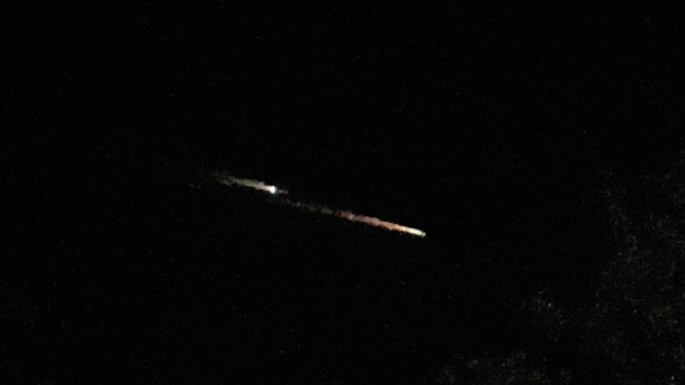Just late Wednesday night, a streak of bright fiery lights zipped across the skies that was seen from Utah to California. Witnesses were quick to record videos and capture photos of this unusual event, where many were skeptical if this was an unusual meteor shower or a large comet, even a fireball or a crashing, burning satellite re-entering our atmosphere.
This glowing, blazing trail was seen from Nevada in Utah all the way to California, however, the U.S. Strategic Command would not provide any concrete details of this event until later this morning.
According to astronomer Jonathan McDowell from the Harvard-Smithsonian Center for Astrophysics, this fireball appears to be burning debris from a Chinese rocket that was launched in June 25. This is based on tracking data obtained from the Joint Space Operations Center, where the Long March 7 rocket gained re-entry around 9:40 P.M. local time over Utah.
McDowell also revealed that this rocket is a new rocket designed by the Chinese, where it was placed in lower Earth orbit for a month, and re-entered the Earth's atmosphere at speeds of 18,000 miles per hour.
For those who saw this blazing sky event, this trail of light is estimated to be above 50 miles from the surface of the planet. The main rocket body probably melted due to intense heat where metal parts burst and could have even reached the ground, he adds.
This streaky light show also occurred during the Delta Aquarid meteor shower, which peaks tonight and tomorrow night, however the American Meteorological Society says that these meteors do not appear like fireballs with distinct streaks of light, trailing the night skies.
McDowell immediately dismissed it as a meteor shower, revealing how meteors can move faster and do not bring with them debris which can appear to crackle and sparkle. He also adds that rocket re-entry is common but visibility of this event is quite rare, since most rocket debris fall into the ocean.
On the other hand, fireballs are more prevalent and can be seen almost nightly anywhere on the planet, but not around populated regions, according to NASA's Near-Earth Object Program's Don Yeomans.



























